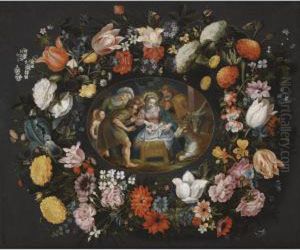Andries Snellinck Paintings
Andries Snellinck, an artist from the Netherlands, was born in 1580 in Antwerp. His artistic career unfolded during the Dutch Golden Age, a period renowned for its cultural, scientific, and economic prosperity, which saw the Netherlands, particularly the Northern provinces, become a powerhouse of art and commerce. Snellinck was a part of this vibrant artistic milieu, although not among the most famous of its contributors.
Snellinck's artistic endeavors are not thoroughly documented, and as such, he is not as well-known as some of his contemporaries, like Rembrandt or Vermeer. However, it is understood that he worked primarily as a painter, with his oeuvre likely including portraits and religious themes, which were common subjects of the era. The specifics of his training are unclear, but like many artists of the time, he may have apprenticed under a master painter, learning the techniques and styles that were popular in the 17th century.
Despite the lack of detailed records regarding Snellinck's life and works, it is assumed that he was reasonably active in the art community of his time. He would have been part of the guild system, which was crucial for artists' professional and social standing. The guilds controlled the training, production, and sale of art, and they often provided a supportive network for its members.
Andries Snellinck passed away in 1666. His death marked the end of a life spent amidst the cultural flourish of the Dutch Golden Age. While Snellinck's legacy may not have the prominence of the period's leading figures, his work still contributes to the rich tapestry of 17th-century Dutch art. Due to the limited information available, any existing works by Snellinck are likely to be found in specialized collections or might remain unidentified, attributed to anonymous masters of the era.




